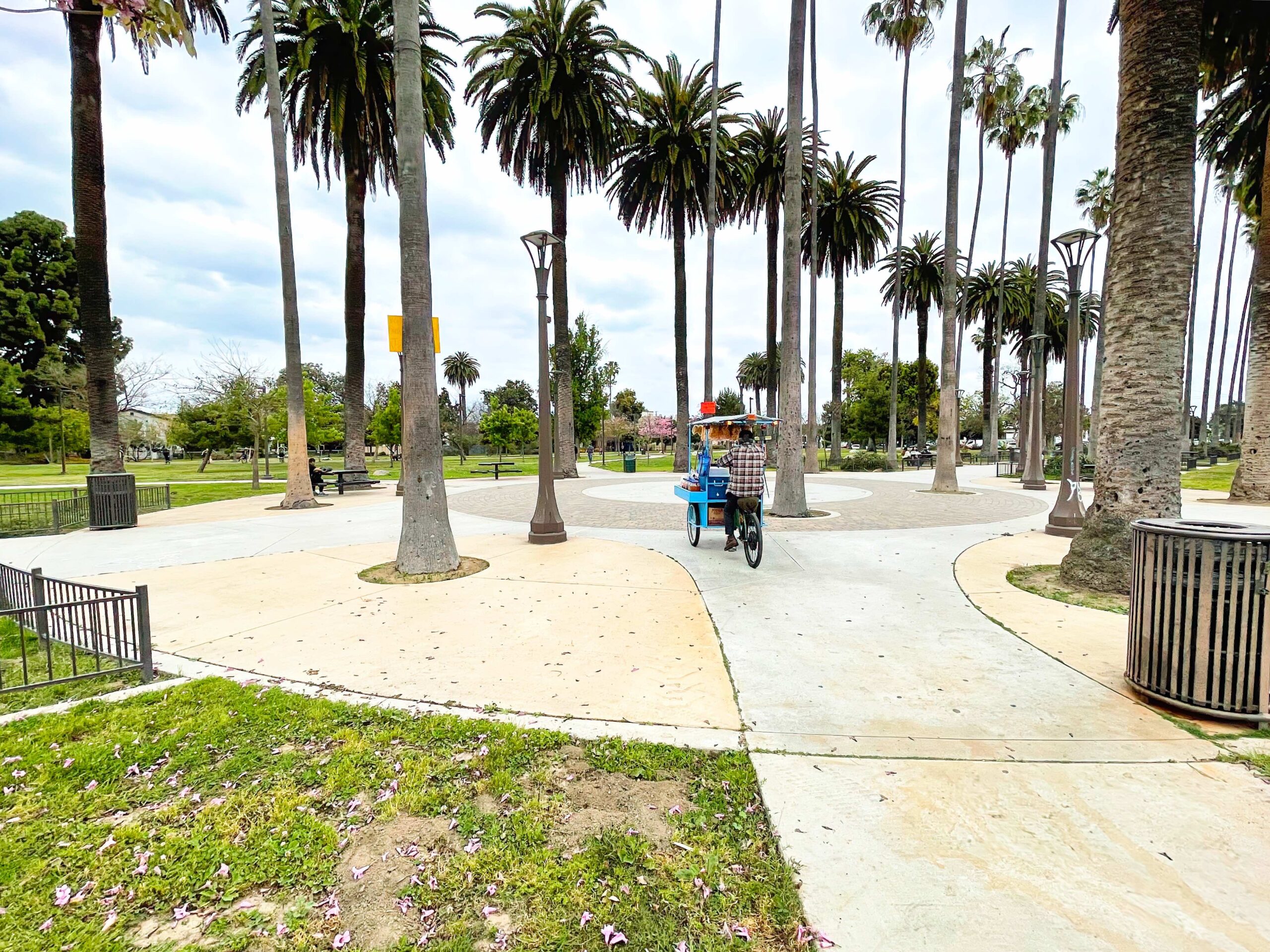By Iris Craige, SAJE Assistant Director of Policy and Research
October 15, 2025
Los Angeles has become a target in a federal immigration enforcement campaign glaringly aimed at Democrat-led cities across the U.S. In June, declaring the city had become a “war zone” in need of forcible “clean up,” President Trump deployed 4,000 National Guard members to support border security while dramatically escalating ICE and DHS operations. These operations continue to brutalize immigrant communities across L.A., targeting street vendors, service and farm workers, and even parents sitting in their cars with their children. Without judicial warrants, armed, masked men are violently dragging people into unmarked SUVs and hauling them off to unknown locations. Thousands have been arrested across the region, the majority with no criminal record.
The Trump administration is using immigration enforcement to send all of Los Angeles a message: oppose me, and, at any moment, for any reason, ICE might make you disappear. One consequence of these efforts is a radical reconfiguration of the city’s public and common spaces. We must see this reconfiguration as central to the administration’s strategy to suppress civil liberties and destroy our sense of solidarity and, with it, our ability to resist authoritarianism.
Public space is not neutral; it holds meaning. The commons—understood not just as the physical spaces accessible to everyone, but as a sense of the collective built from shared resources and mutual care and belonging—is being hollowed out. Markets, schools, bus stops, street corners, parks, and community centers are now operating under a pall of fear. Doors are locked, crowds are thin, and daily routines have been disrupted. Parents no longer walk their children to school, vendors have abandoned their street corners, and small businesses have shuttered.
The seizure of public space to disempower communities is not new. Mike Davis, writing about LAPD crackdowns in MacArthur Park in the 1990s, described how officers justified sweeping raids and blockades, claiming they were “taking back the streets” from drug dealers, “illegal immigrants,” and gang members. Entire neighborhoods were deemed “Narcotics Enforcement Areas,” sidewalks blockaded, and public housing turned into “defensible space” with checkpoints, fences and police substations. Mayan women selling fruit at MacArthur Park were rounded up alongside alleged gang members, their use of public space criminalized in the same breath as drug dealing. As Davis wrote, by abolishing informal uses of public space, such as street vending, day laborer corners, and neighborhood markets, the LAPD destroyed “the last informal safety-net separating misery from catastrophe.”
Today’s ICE raids continue this legacy of militarization, but escalate it from merely policing space to attempting to erase the visibility of entire communities. During the 1990s, the LAPD was criminalizing poverty and survival economies; today, ICE is criminalizing people, turning racialized identity, or being Brown or non-white, itself into evidence of alleged illegality. On July 7, ICE agents stormed MacArthur Park with armored vehicles, horses outfitted in tactical gear, and assault rifles on display. It’s not clear if any arrests were made. But the spectacle itself was the point: a theatrical occupation designed to stoke fear and deter the public–especially immigrants—from assembling, a right guaranteed by the U.S. Constitution precisely because it is essential for maintaining a healthy democracy through collective action and resistance.
In this way, the ICE raids have gone beyond immigration enforcement to become spatial interventions in the fabric of our city. And, as such, the survival of the commons requires solidarity and collective action. It demands that even those who are not directly targeted by ICE take up public space as allies, witnesses, and defenders. We see this in the Angelenos showing up for marches and protests, in the organizing work by groups who’ve been patrolling their local Home Depots to warn day laborers of ICE presence, and in the mutual aid funds set up for families struggling with job loss or too afraid to show up for work.
The survival of the commons also means the LAPD must end their ongoing collaboration with ICE. Los Angeles calls itself a sanctuary city, but sanctuary is not possible while local police provide backup during raids and share arrest records that ICE can access.
Ultimately, the task before us is not only to oppose ICE raids, but to cultivate a renewed sense of solidarity and commitment to a Los Angeles where everyone is allowed to take up space. We will be saved by our refusal to abandon one another during this crisis.

